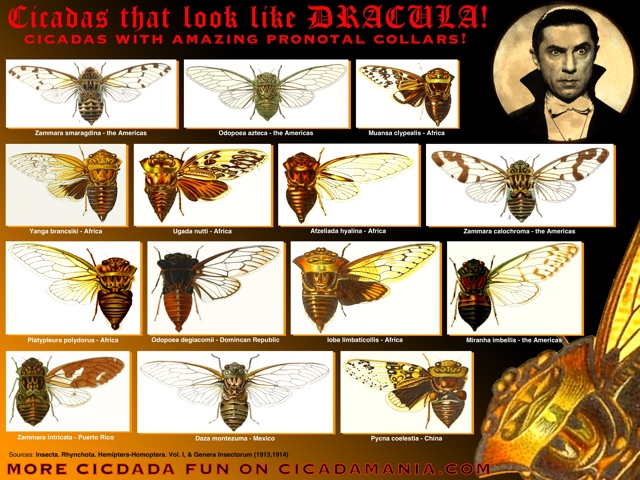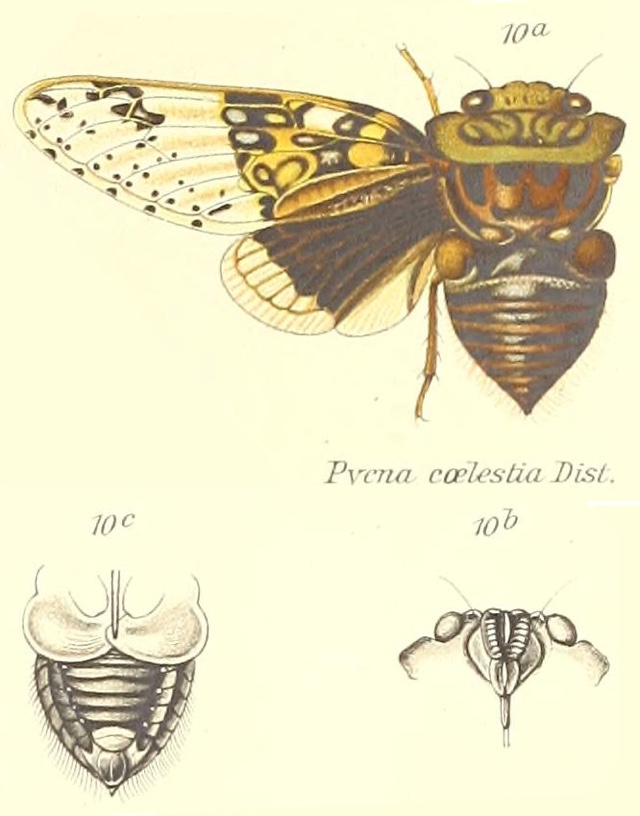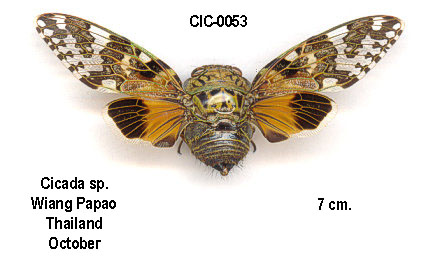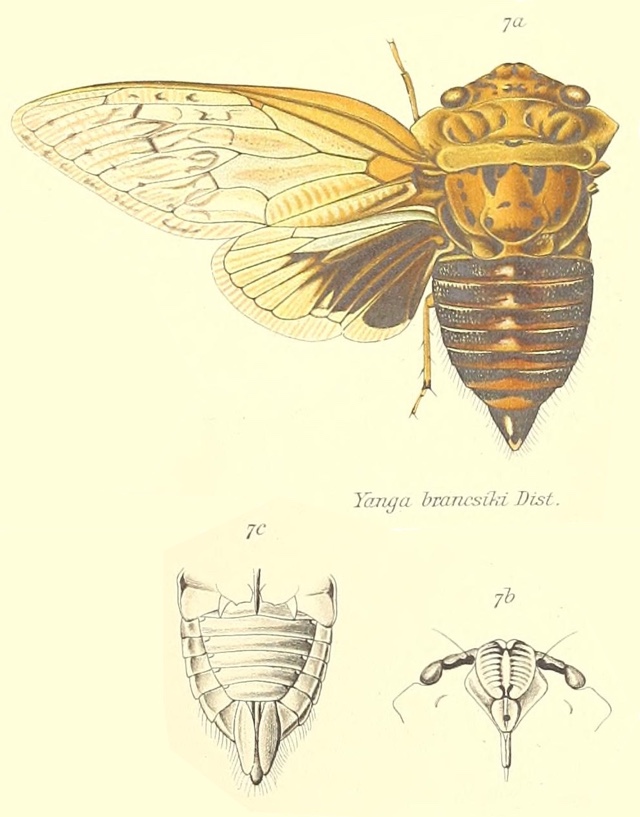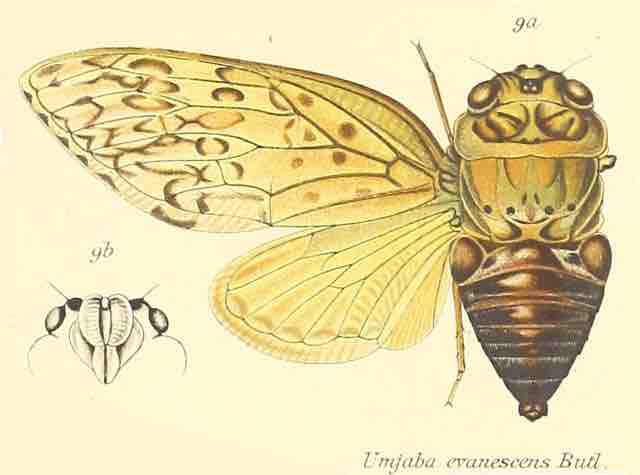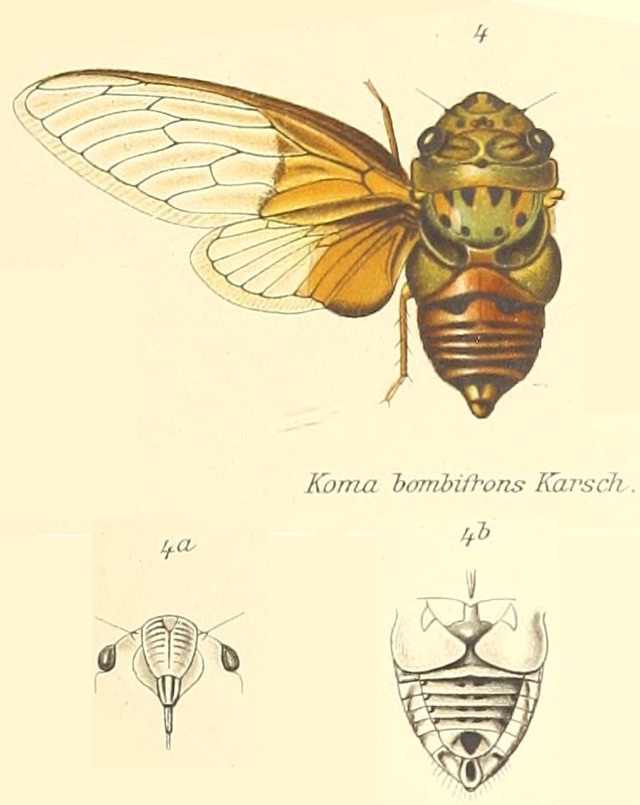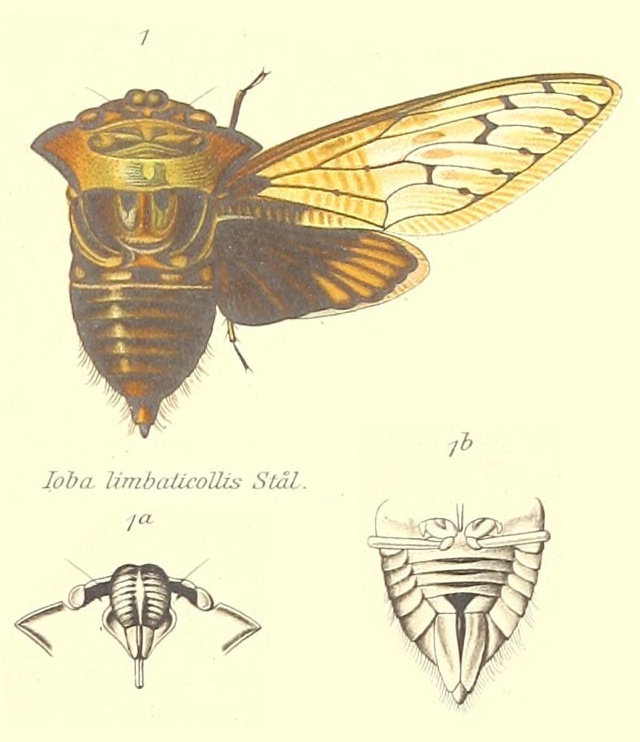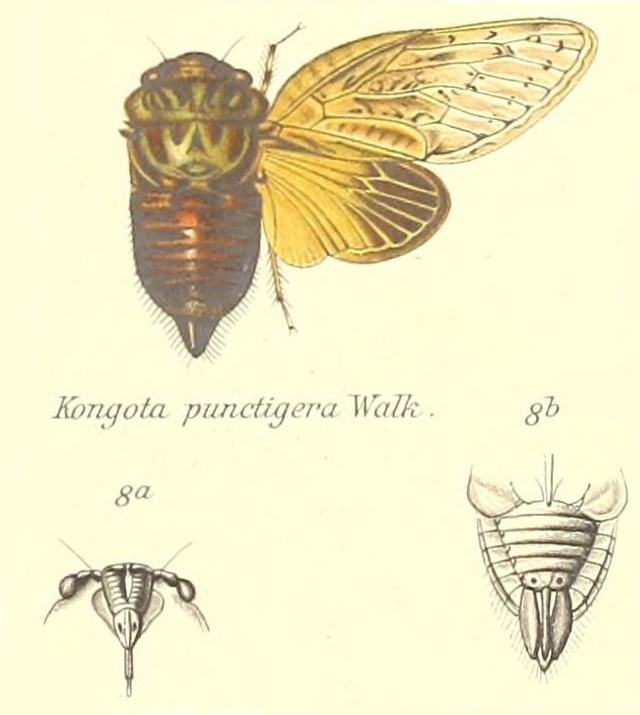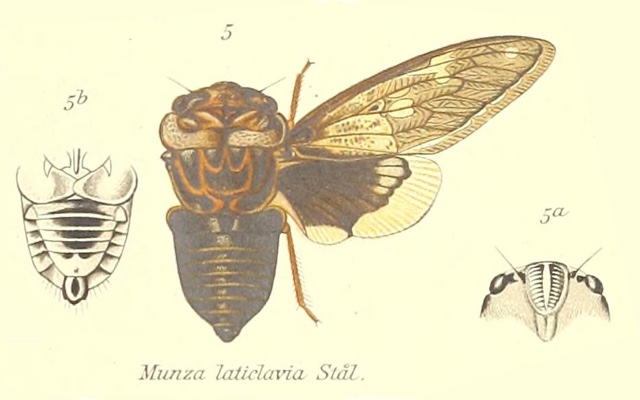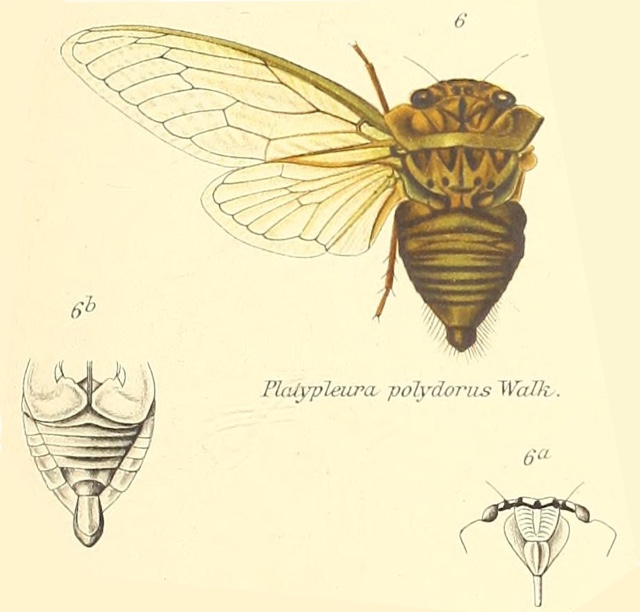Ugada nutti Distant, 1904 is found in Tanzania. It has, perhaps, the most impressive pronotal collar of any cicada.
Scientific classification:
Family: Cicadidae
Subfamily: Cicadinae
Tribe: Platypleurini
Genus: Ugada
Species: Ugada nutti Distant, 1904
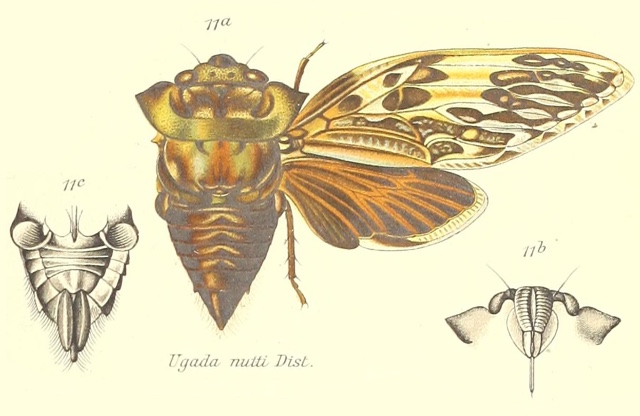
Ugada genus description by W. L. Distant:
Characters. — Head (including eyes) only about two thirds the width of base of mesonotum, not truncate anteriorly, but obliquely deflected in front of eyes; pronotum transverse, the posterior margin a little more than half the length of its vertex, the lateral margins strongly ampliated and medially angulated, their apices reaching to middle or near end of basal cell of tegmina ; mesonotum about as-long-as pronotum; anterior femora tuberculately angulate near apex, posterior tibiae spined on apical area ; metasternum elevated and centrally sulcate ; tympana well covered ; opercula short and broad, their apices more or less convexly rounded; rostrum reaching or passing the posterior coxae; tegmina with the costal membrane not prominently arched at base, only moderately dilated, basal cell moderately short and broad; ulnar veins widely separated at their apices.
The illustration and genus description comes from the journal Genera Insectorum, and a specific article from 1913 by W. L. Distant titled Homoptera. Fam. Cicadidae, Subfam, Cicadinae. Read it on the Biodiversity Heritage Library website.
Current species name verified using Allen Sanborn’s Catalogue of the Cicadoidea (Hemiptera: Auchenorrhyncha).chenorrhyncha).
